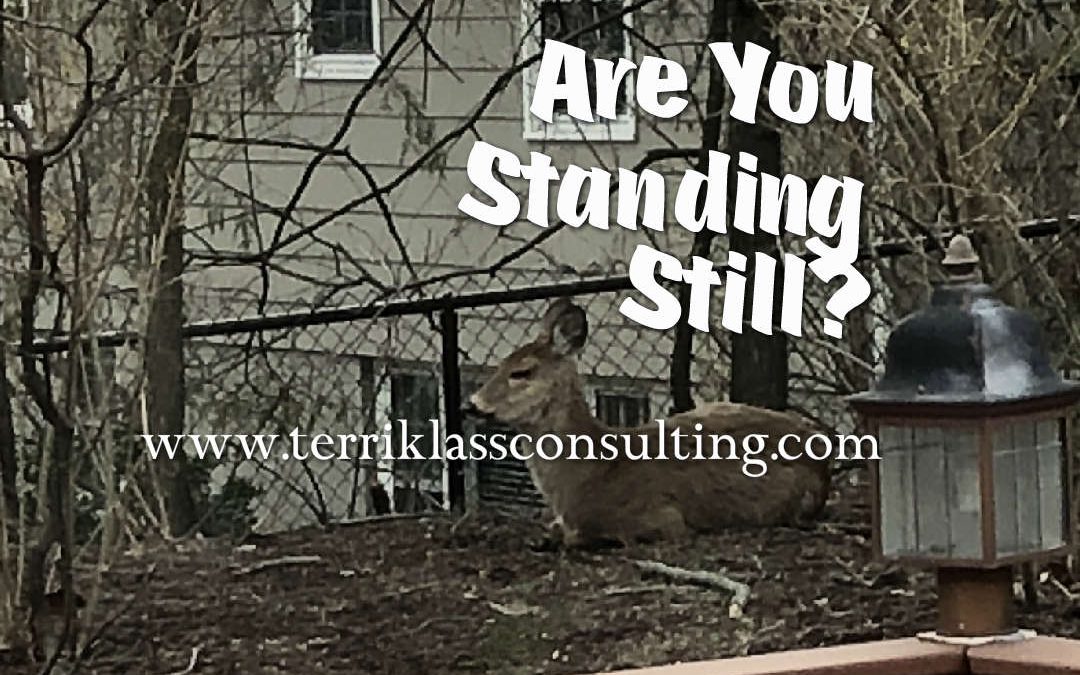We often don’t see it coming. There we are staring at our massive amount of tasks and responsibilities, wondering how it happened so quickly. It occurs both in our professional and personal lives. Yet, being overwhelmed or feeling like we have too many projects to turn out in too little time is something all leaders confront. It’s why we are leaders. So what should we do when we are faced with a heavy workload?
We can run and hide.
We can panic and freeze.
We can pretend we have plenty of time.
But all of these paths lead to indecision and inaction. The worst thing leaders can do in times of anxiety is stand still.
Here are some ways for leaders to conquer standing still:
LOOK AT THE VALUE OF THE WORKLOAD
Not all workloads are equal and that means leaders must refine their projects to give them meaning and purpose. We may have a litany of assignments but each has a different value and worth. When I work with leaders and they vent about what’s on their plate, I try to empower them to see the importance of what they are doing. Some empowering questions might include:
- Which of these tasks are a real priority and which ones don’t I have to do today?
- How does this project add to the team’s direction?
- How can I include what’s important to me to give this deliverable a meaningful kick?
- How can I showcase my strengths and talents through this work?
[Tweet “When leaders add their unique gifts to a project it becomes more purposeful to them.”]
BREAK DOWN TASKS INTO SMALLER CHUNKS
It can be crushing to face a pile of work that appears insurmountable. We can get stuck, not knowing where to begin. A proven way to look at a large project is to see it as several smaller steps. Think about how you learned to read. First you mastered the letters, then you learned the sounds and finally you pulled it all together to form words. In a similar way we can turn smaller successes into larger achievements by honoring the milestones along the way. Another benefit to separating out the steps is that we see movement forward continually rather than feeling that we are standing still.
SEE THE RIPPLE EFFECT OF FREEZING IN PLACE
So here’s the crazy part of getting stuck and freezing in place; it carries over into every other part of our professional worlds. Once we are unable to get through our piece of the assignment, our team members will be backlogged too. The hidden detractors of freezing in place include:
- Deadlines are missed or constantly being moved up
- We become known as an unreliable team member
- Our late work is never viewed at its best
- The team members become very frustrated and that may impact our relationships
- We may be overlooked for challenging and high visibility projects
[Tweet “When leaders freeze instead of following through they can miss out on high visibility projects.”]
FOCUS ON THE BIGGER PICTURE
If during a period of intense work you are unable to see the larger picture of what you are doing, then STEP BACK. Without understanding how our work fits into the overall mission of a team or organization’s purpose, then it is impossible to perform at our highest level. It is only when we see where we are headed and how our specific hard work contributes to a meaningful outcome, then we can lead with commitment. To make that happen, leaders must ask about the bigger focus and how specifically they are supporting it.
How have you conquered standing still? What has empowered you to overcome being stuck?



We’ve all been there and you’re right – it’s why we’re leaders. Years ago a woman I worked with taught me the phrase that you probably already know but was new to me… “How do we eat an elephant? One bite at a time.” Sometimes when we have more than we can imagine on our plates the key is to get started somewhere and knock one thing at a time off our lists.
Standing still is something we’ve all had to combat. Thanks for your suggestions here. Will share!
Alli
I love that phrase and haven’t heard it! With many leaders it takes overcoming the initial panic before taking a bite at the apple. Many of us can lose our energy levels and just want to hide when our lists become overpowering. Standing still just isn’t an option if we truly want to lead. Whether we take baby steps or reach out for assistance, we need to lead forward.
Thanks Alli for sharing your helpful story with us!
Terri, I agree, no decision or action is a decision. I wanted to share that sometimes standing still is the right decision, when it is done intentionally. Sometimes projects get crazy and the best thing the leader can do is to stand still and let the team see the confidence and solid footing.
Bottom line, our actions need to be intentional whether moving or standing.
I agree Bill that sometimes we need to reflect before taking additional actions. But I think that isn’t standing still. That is actually thinking and deciding.
Thanks so much for stopping by and adding to our dialogue!